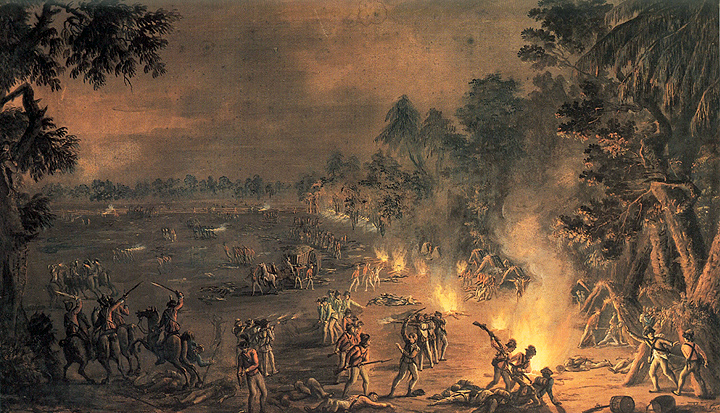MAP HERE WHEN READY
Date: 1 July 1776
Foreign intervention rating: 14
Kingdom of Great Britain
National morale: 95
Forces:
Major General Sir William Howe (Revan529)
Location: Philadelphia, Pennsylvania
Strength: 9,456 men, 40 guns
Training: Good
Experience: Seasoned
Supply: Good
Morale: Good
Major General Sir Henry Clinton (Deaghaidh)
Location: West of Crown Point, New York
Strength: 2,427 men (75 Indians), 11 guns
Training: Good
Experience: Little
Supply: Adequate
Morale: Good
Governor/Major General Sir Guy Carleton (Stingrex)
Location: West of Crown Point, New York
Strength: 1,631 men (115 Indians), 8 guns
Training: Adequate
Experience: Seasoned
Supply: Good
Morale: Average
Lieutenant Governor/Brigadier General Henry Hamilton (Ranger900)
Location: Fort Detroit, Illinois Country
Strength: 150 men (120 Indians)
Training: Poor
Experience: None
Supply: Adequate
Morale: Average
Major General John Burgoyne ( )
Location: Halifax, Nova Scotia
Strength: 4,000 men, 13 guns
Training: Good
Experience: None
Supply: Good
Morale: Average
Major General Friedrich Adolf Riedesel (Olligarchy)
Location: Halifax, Nova Scotia
Strength: 3,000 men (Hessians), 7 guns
Training: Good
Experience: None
Supply: Good
Morale: Good
Reserve commanders:
Charles Cornwallis/Lord Cornwallis
John Campbell
Charles Grey
Banastre Tarleton
Patrick Ferguson
Alexander Leslie
James Grant
Archibald Campbell
William Fawcett
Francis Rawdon/Lord Rawdon
Sir William Erskine
Hugh Percy/Lord Percy
Charles Mawhood
William Medows
Charles O'Hara
William Phillips
Thirteen Colonies
National morale: 87
Forces:
General George Washington (Dadarian)
Location: Southwest of Easton, Pennsylvania
Strength: 9,243 men, 33 guns
Training: Poor
Experience: Little
Supply: Adequate
Morale: Good
Brigadier General Benedict Arnold (aedan777)
Location: Fort Crown Point, New York
Strength: 1,117 men, 17 guns
Training: Poor
Experience: Seasoned
Supply: Adequate
Morale: Good
Colonel William Moultrie (baboushreturns)
Location: Fort Sullivan, South Carolina
Strength: 540 men, 5 guns
Training: Poor
Experience: None
Supply: Adequate
Morale: Good
Major General Lord Stirling ( )
Location: Southwest of Easton, Pennsylvania
Strength: 4,578 men, 15 guns
Training: Poor
Experience: Little
Supply: Adequate
Morale: Average
Major General Israel Putnam (Maxwell500)
Location: New York City, New York
Strength: 1,000 men, 9 guns
Training: Poor
Experience: None
Supply: Adequate
Morale: Good
Reserve commanders:
Daniel Morgan (POW)
Nathanael Greene
Horatio Gates
Gilbert du Motier/Marquis de Lafayette
Benjamin Lincoln
John Sullivan
Anthony Wayne
Johann de Kalb
Henry Knox
Charles Lee
Friedrich Wilhelm von Steuben/Baron von Steuben
Casimir Pulaski
Thomas Mifflin
Alexander McDougall
Nicholas Herkimer
George Rogers Clark
Hugh Mercer












